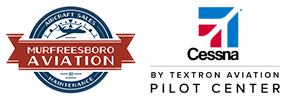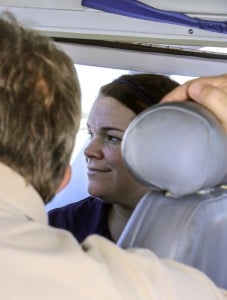 You are in stage one of your training and you have been learning your ground reference maneuvers for the first few flights. Now your instructor is going to transition your training for the second half of stage one. You will mainly concentrate on pattern work at the airfield where you will solo. Pattern work simply means flying in a pattern around the airport after takeoff and then landing or doing a “touch and go”. It’s a way to practice many takeoff’s and landings while also practicing your radio and other skills you’ve learned at the same time.
You are in stage one of your training and you have been learning your ground reference maneuvers for the first few flights. Now your instructor is going to transition your training for the second half of stage one. You will mainly concentrate on pattern work at the airfield where you will solo. Pattern work simply means flying in a pattern around the airport after takeoff and then landing or doing a “touch and go”. It’s a way to practice many takeoff’s and landings while also practicing your radio and other skills you’ve learned at the same time.
This part of training puts your initial training of learning maneuvers to use. The first day of mainly pattern work, it’s not unusual to fly numerous patterns. Taking off is the easy part. You add power to the plane, use your feet to steer the aircraft down the runway centerline and gently pull the yoke back to make the airplane fly.
After takeoff, you climb to a safe altitude, turn crosswind, continue your climb to pattern altitude, turn to enter the downwind, and get ready to start the process for landing. Everything comes quickly. You have to make sure you complete your checklists, make your radio calls, and fly the plane…don’t forget to fly the plane! It is your number one responsibility. Aviate, Navigate, Communicate. This is a great little statement to remember. It reminds you that when you are busy and everything seems to be happening quickly, fly the plane first!
As you prepare to configure and start the landing process, there is an acronym for the checklist items. It doesn’t take the place of your checklist but allows you to complete the items and then verify you completed them all. C-GUMPFS.
- • C stands for Carburetor (carb) Heat. Carb heat ensures there is no ice build-up in the carburetor.
- • G is for Gas. Make sure the gas in selected correctly.
- • U is for undercarriage. If you have retractable landing gear, have you put them down and do the indicators show that all wheels are locked in the down position? If you have fixed gear, get in the habit of saying fixed so when you fly an aircraft with retractable gear, you do not forget this step.
- • M stands for mixture. Talk with your instructor to find out what mixture is “rich” enough for your airplane for landing.
- • P is for power, prop, and pumps. Make sure your power is set so that you only need to make slight adjustments when you line up on final. If you have an adjustable pitch prop make sure it is set to the right pitch for landing. Some planes have a fuel pumps that is required for landing and this is time to turn it on.
- • F is for flaps. Most planes require flaps to be rolled in incrementally. This step in the checklist is for the initial setting of your flaps. The remainder of the flaps required for landing are rolled in on base and final.
- • S is the final letter in the acronym and stands for speed, switches, seatbelts, and silence. Speed is a reminder to review the speeds you are aiming for during the descent and turns to land, switches means to check your lights and any other switches that require attention during the before landing checklist for your airplane, and seatbelts reminds you to ensure all people onboard the plane are appropriately buckled in for landing. The final “S” is silence. This is your reminder that chatter should be minimal until you land the airplane. This brings you back to flying the airplane first.
Once you complete C-GUMPFS, you will continue your descent from pattern altitude. You will turn base and then final. Make sure you turn early enough that you do not fly past your final approach course, but not too early. Line up on the runway and get ready to land. Your instructor will teach you aimpoint and how to shift your focus to the horizon to land the place. You will land as close to center as possible and flare the airplane. Some flare high, some have a low flare, some planes have a tendency to balloon, and some have a tendency to sink quickly. You will learn all about how your plane lands. After you land your instructor will either have you clear the runway and taxi back for another takeoff or have you do a touch and go. You will have discussed this before your descent, so it will not be a surprise.
Learning pattern work is an exciting step. It will not be too many flights before your instructor sees that you are ready to solo. Enjoy this time, learn from repetition, and do not let yourself become discouraged if your landings are not what you want them to be initially. Your instructor is not looking for perfection. Your instructor is looking for progress! And your progress is what leads to solo.
Happy flying and get ready for that solo!!

